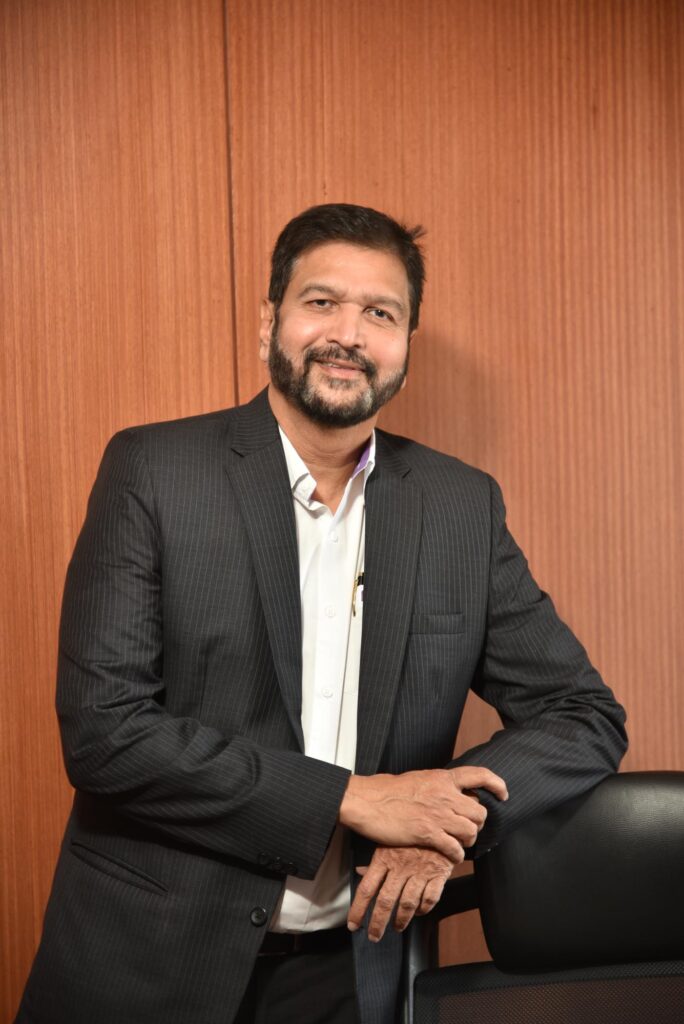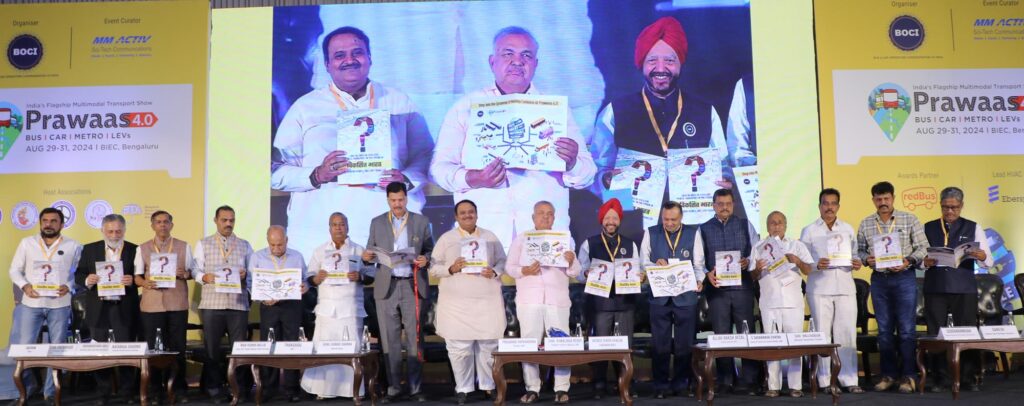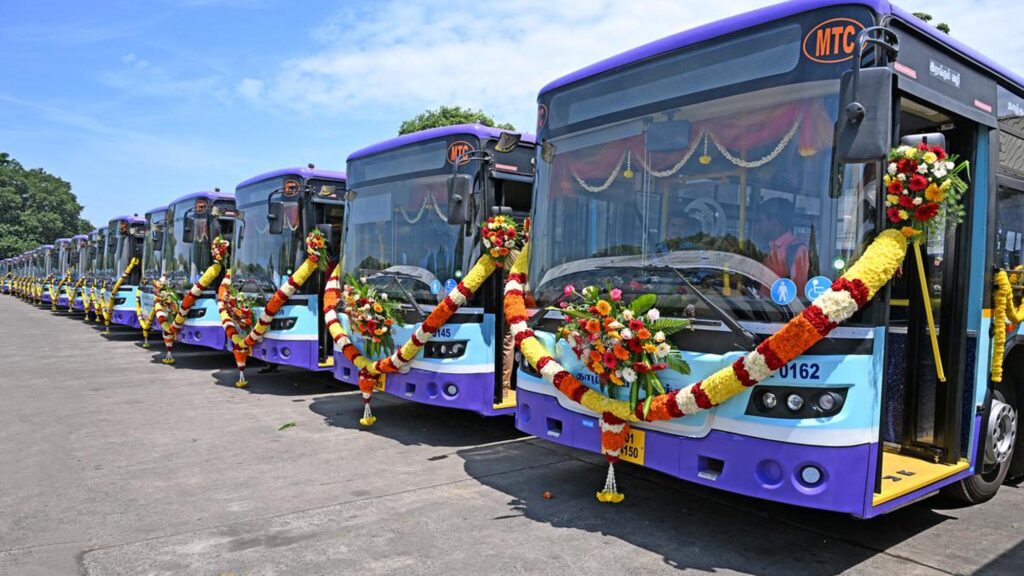-An Exclusive Interview with Prasanna Patwardhan

In an exclusive interview with Rajesh Rajgor, Prasanna Patwardhan, President of the Bus & Car Operators Confederation of India (BOCI) and CMD of Prasanna Mobility Solutions Ltd., shares insights on the organization’s initiatives to revolutionize passenger mobility in India.
The Prawaas Summit, organized by BOCI is a premier mobility event aimed at revolutionizing the public transport sector in India. Prasanna Patwardhan discusses the technological advancements and sustainable practices promoted by BOCI to enhance safety, efficiency, and convenience in public transport. He elaborates on efforts to integrate various modes of public transport, the role of Public-Private Partnerships (PPP), and measures taken to ensure the economic sustainability and affordability of public transport systems. Additionally, Patwardhan highlights the specialized services and training programs offered by BOCI, the significance of the Prawaas Summit, and the growth plans for Prasanna Purple. This comprehensive interaction sheds light on the transformative impact BOCI is making in the public transport sector.
Edited excerpts:
How is BOCI leveraging technology and promoting sustainable practices to enhance safe, smart, and sustainable passenger mobility solutions? Can you highlight specific advancements, initiatives, and projects that exemplify these efforts?
At BOCI, we are committed to creating awareness about the importance of safety among operators. During the COVID-19 pandemic, we produced films demonstrating the necessary precautions and even created a safety film for passengers, similar to those shown by airlines. We ensure our operators are well-versed in the latest technologies that improve efficiency, such as driver training programs focused on safe driving and emergency protocols. We continuously engage in dialogue with state and central governments to advocate for regulations that support sustainable passenger transport services.

What steps is BOCI taking to facilitate the integration of various modes of public transport and improve connectivity, particularly in rural and semi-urban areas? Can you share successful case studies or pilot projects that demonstrate the benefits of an integrated multimodal transport system?
Unfortunately, all service providers work in silos. Rail, air, and waterways can only be effectively connected to people’s work and residences by providing last-mile connectivity. We are striving to create synergy between State Transport Undertakings (STUs) and private operators, though we have faced challenges. For instance, Cochin Metro is trying to connect metro services to private buses through feeder services to ensure last-mile connectivity, but governmental support has been limited.
How does BOCI advocate for and facilitate Public-Private Partnerships (PPP) in the passenger transport sector? Can you provide examples of successful PPP initiatives and policy changes influenced by BOCI’s efforts that have positively impacted the public transport landscape?
Since the beginning, I have been part of various committees formed during the Jawaharlal Nehru National Urban Renewal Mission (JnNURM), which made standard concession documents. My first PPP document was just two pages and very one-sided. With our inputs, PPP concession agreements are now much more balanced, providing a boost to PPP projects. Successful examples include DIMs, Indore City Bus, and Bus Rapid Transit (BRT) systems in Ahmedabad and Surat. BOCI frequently engages with Niti Ayog, the Ministry of Road Transport and Highways (MORTH), the Ministry of Housing and Urban Affairs (MOHUA), and the Ministry of Heavy Industries (MHI).
How is BOCI ensuring the economic sustainability of public transport systems while maintaining affordability for passengers? Additionally, what specific measures have been implemented to enhance passenger safety and security, and can you share recent developments or collaborations in this area?
We implement specific measures to ensure passenger safety, including driver training and emergency response protocols. Continuous dialogue with the government helps us maintain economic sustainability while keeping fares affordable. Our approach balances financial viability with the need to provide accessible and safe public transport services.
What specialized services and training programs does BOCI offer to its members to support their growth and development? How do you envision the Prawaas Summit evolving to drive innovation in the public transport industry?
At Prawaas, you’ll find OEMs, tech companies, and suppliers showcasing their products and services. The two-day conference involves deliberations where bureaucrats, political leaders, industry experts, academia, and bus and car operators debate and discuss various subjects. A report is then submitted to the ministry, providing inputs on how to attract more people to public transport.
The Prawaas Summit aims to drive innovation and transformation in the public transport sector, making it safer, smarter, and more sustainable. By bringing together a diverse set of stakeholders, the summit seeks to address the challenges faced by the industry and develop solutions that enhance the overall passenger experience. Through continuous dialogue, policy advocacy, and the adoption of cutting-edge technologies, Prawaas is committed to shaping the future of public transport in India.
Lastly, could you provide an update on Prasanna Purple’s current state, including fleet size, modern technologies in use, and expansion plans for intercity, corporate, and school bus services?
At Prasanna Purple, we operate nearly 1,000 vehicles. Our plan is to expand in electro-mobility and create a nationwide network of luxury coaches. We aim to grow in school and staff transportation across multiple cities in India and explore promising opportunities in PPP projects.
Thank you for your insights, Mr. Patwardhan. It’s evident that BOCI and Prasanna Mobility Solutions are making significant strides in transforming public transport in India.
Thank you, Rajesh. Our continuous efforts and collaborations are indeed driving the transformation of public transport, making it safer, smarter, and more sustainable for the future.
100 new MTC buses flagged off in Chennai

At the Metropolitan Transport Corporation (MTC) Central Office in Chennai, Youth Welfare and Sports Development Minister Udhayanidhi Stalin flagged off 100 new and refurbished buses valued at Rs. 66.15 crore for public use. The event was attended by S.S. Sivasankar, Tamil Nadu Transport Minister; PK Sekar Babu, Hindu Charities Minister; R. Priya, Chennai Metropolitan Corporation Mayor; Dayanidhi Maran, Member of Parliament; K. Panindra Reddy, Additional Chief Secretary of the Transport Department; Dr. Alby John Varghese, Managing Director, MTC; S. Natarajan, Joint Managing Director, MTC; K. Natarajan, T.M.S. Council Treasurer; along with senior officials, union administrators, and employees.